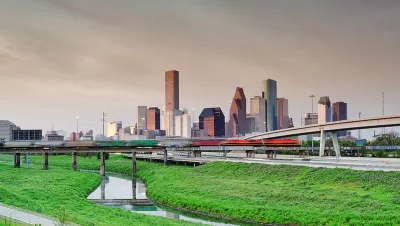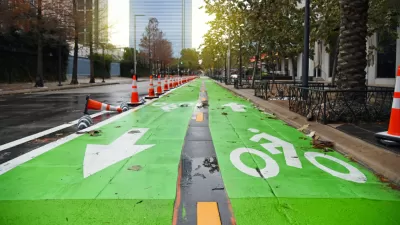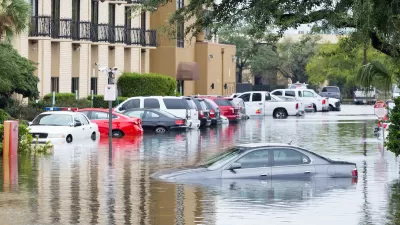The Resilient Houston initiative promises to strengthen the city's infrastructure and increase its capacity to thrive and adapt under crisis.

Luis Guajardo of Rice University's Kinder Institute for Urban Research assesses the city of Houston's progress on its 2020 "resilience strategy," adopted "to improve the capacity of individuals, communities, institutions, businesses and systems within the Houston region to not only survive any and all chronic stresses and acute shocks they might experience, but adapt and thrive."
The initiative, Resilient Houston, addresses potential "shocks and stresses" including natural disasters, public health threats, and infrastructure failures. After Texas's "short-sighted, deregulatory approach to energy policy" had disastrous effects during the recent winter storm that left millions across the state "stranded in their homes for days without power, heat, potable water and food," Houston leaders and stakeholders must redouble their efforts to build resiliency into the city's infrastructure.
Highlights of progress made in the last year include the construction of over 36,000 residential units, new incentives for property owners who install green stormwater infrastructure, and the planting of close to half a million trees.
The Institute plans to track future progress even more closely. "Later this year, the Kinder Institute will launch its Resilience and Recovery Tracker, which consolidates the recovery, mitigation and adaptation efforts of Harris County and the City of Houston on one website," and "can be used to access spending dashboards, interactive maps and thematic pages related to recovery from — and resilience to — extreme events."
FULL STORY: One year in, what progress has Houston made in its plan to build resilience?

Alabama: Trump Terminates Settlements for Black Communities Harmed By Raw Sewage
Trump deemed the landmark civil rights agreement “illegal DEI and environmental justice policy.”

Study: Maui’s Plan to Convert Vacation Rentals to Long-Term Housing Could Cause Nearly $1 Billion Economic Loss
The plan would reduce visitor accommodation by 25% resulting in 1,900 jobs lost.

Why Should We Subsidize Public Transportation?
Many public transit agencies face financial stress due to rising costs, declining fare revenue, and declining subsidies. Transit advocates must provide a strong business case for increasing public transit funding.

Paris Bike Boom Leads to Steep Drop in Air Pollution
The French city’s air quality has improved dramatically in the past 20 years, coinciding with a growth in cycling.

Why Housing Costs More to Build in California Than in Texas
Hard costs like labor and materials combined with ‘soft’ costs such as permitting make building in the San Francisco Bay Area almost three times as costly as in Texas cities.

San Diego County Sees a Rise in Urban Coyotes
San Diego County experiences a rise in urban coyotes, as sightings become prevalent throughout its urban neighbourhoods and surrounding areas.
Urban Design for Planners 1: Software Tools
This six-course series explores essential urban design concepts using open source software and equips planners with the tools they need to participate fully in the urban design process.
Planning for Universal Design
Learn the tools for implementing Universal Design in planning regulations.
Smith Gee Studio
Alamo Area Metropolitan Planning Organization
City of Santa Clarita
Institute for Housing and Urban Development Studies (IHS)
City of Grandview
Harvard GSD Executive Education
Toledo-Lucas County Plan Commissions
Salt Lake City
NYU Wagner Graduate School of Public Service





























